Southwest Michigan field crops update – May 15, 2025
Corn and soybeans continue to emerge while planting is ongoing. Wheat is at Feekes 9 (flag leaf fully emerged) and early 10 (boot stage).

Weather
Scattered showers over the past week did little to halt field operations as planting and cultivation continued. For the most part conditions were mild but humid. Possible storms tonight and tomorrow will bring cooler temperatures over the weekend and throughout next week. The next chance for significant precipitation will be early next week.
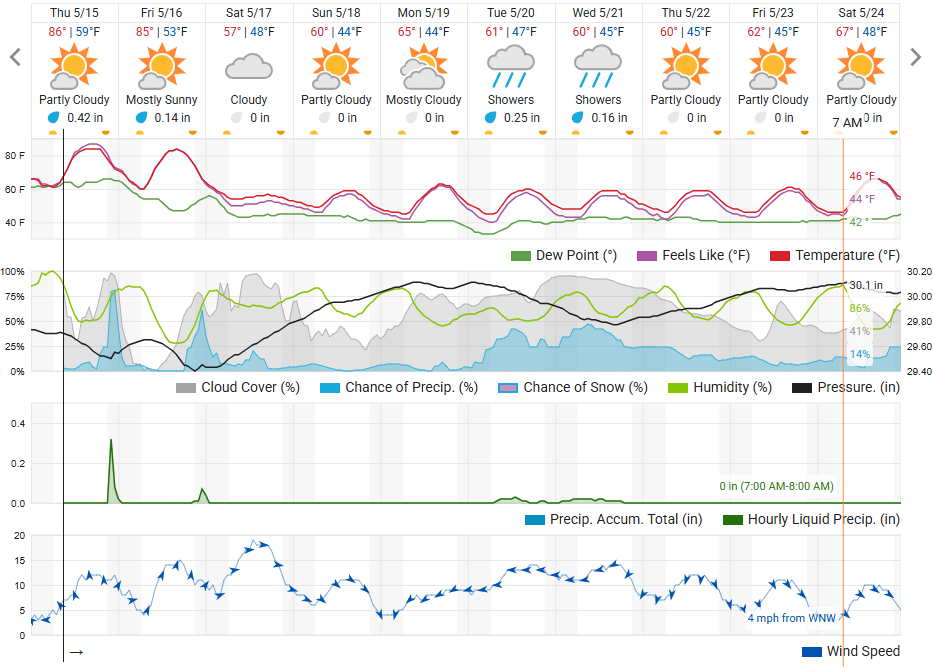
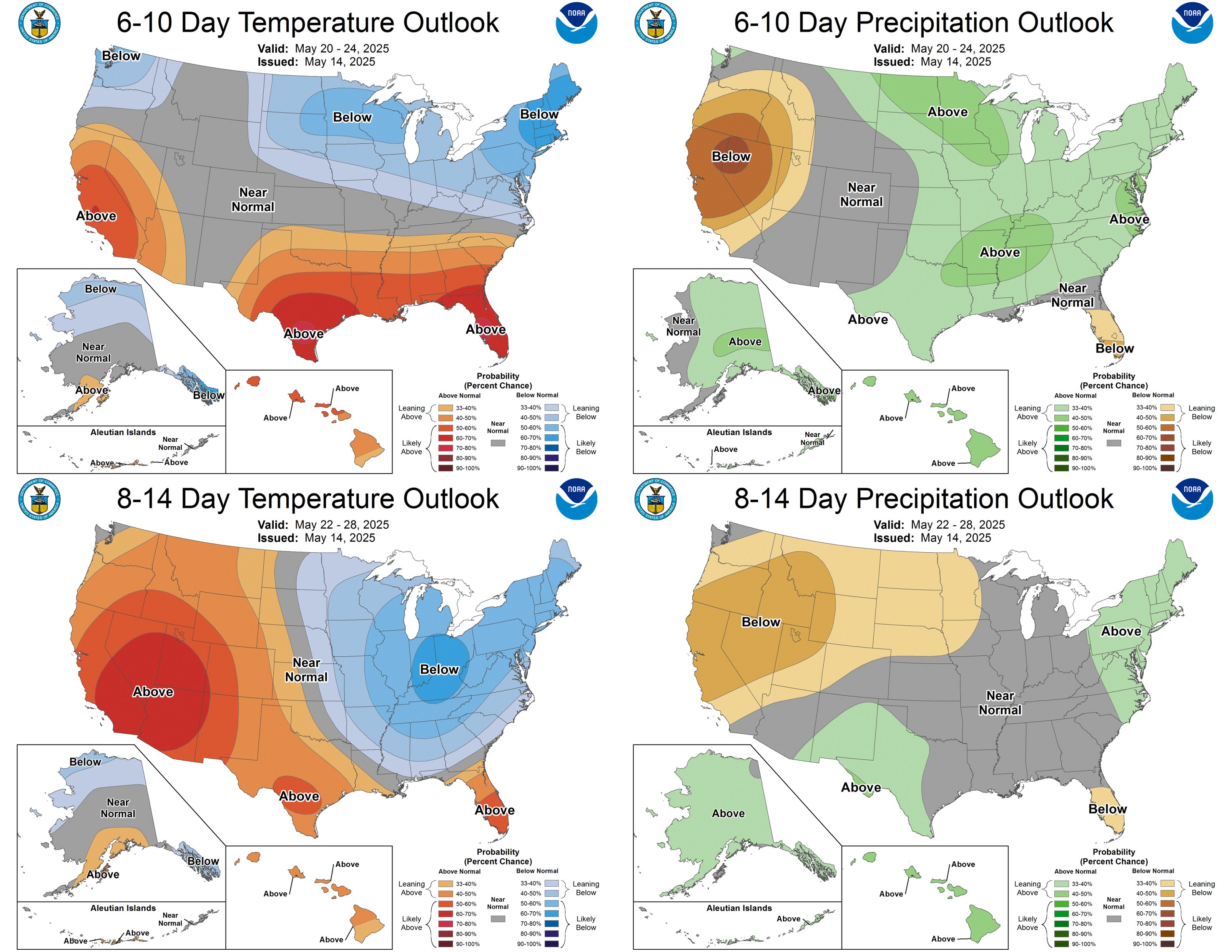
Crops and pests
Soybeans and corn continued to emerge. Planting was also ongoing, including staggered male row planting in seed corn. According to the NASS survey as of May 12, 2025, corn planting throughout the state is about 50% complete (almost twice as much as we had planted this time last year). Soybeans are just mildly ahead of where they were last year with about 30% planted. This number is probably higher for southwest Michigan. Continue to check fields for damage from early-season pests such as seedcorn maggot (especially if fields were planted into decaying residues and/or tillage around April 18), black cutworm, grubs (especially along sandy ridges) and slugs (in no-till and/or high residue systems).
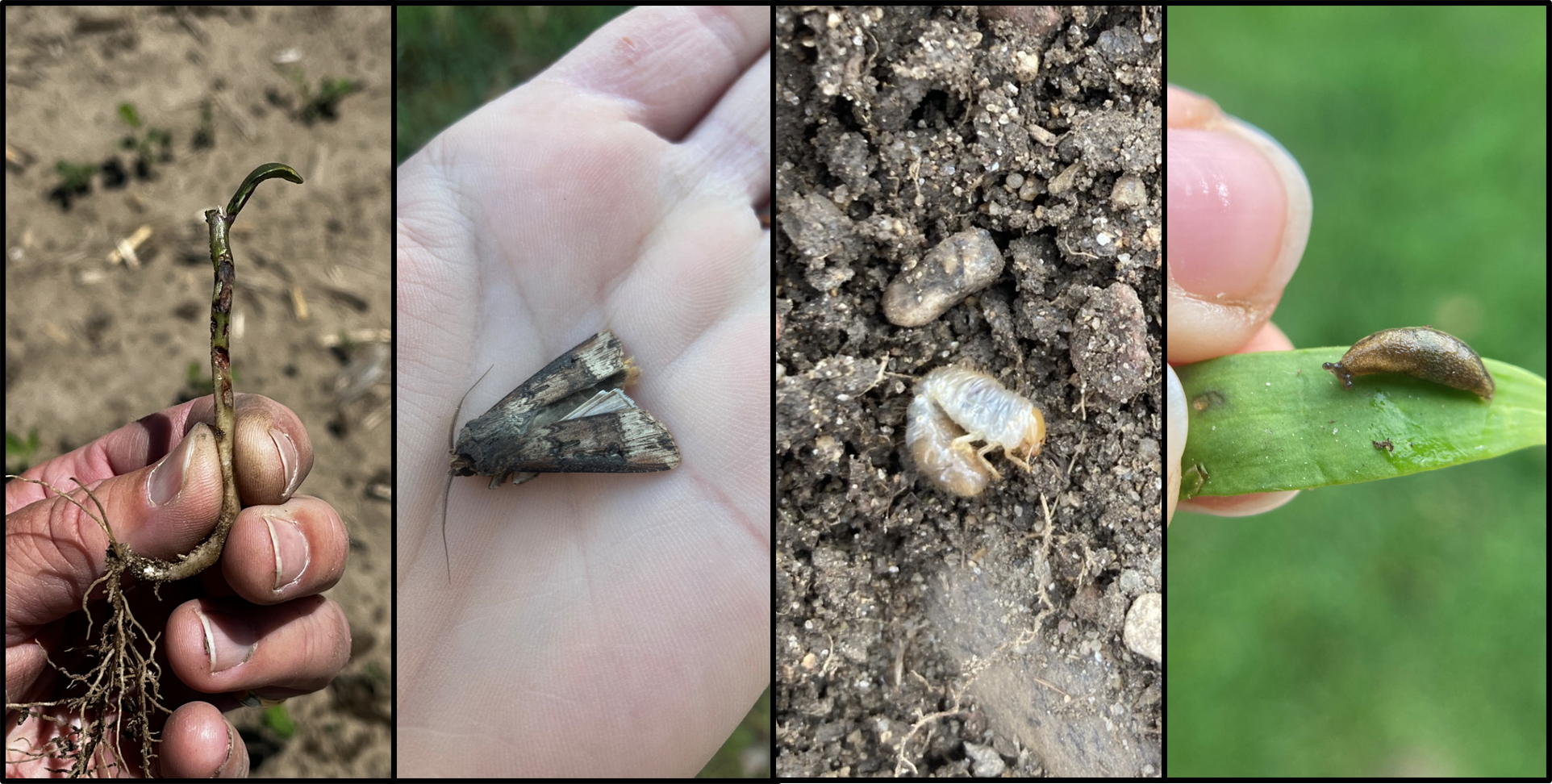
Bucket traps in Berrien (near Berrien Springs), St. Joseph (Centreville) and Van Buren (Lawrence) counties have caught the following:
True armyworm
|
Date |
Berrien |
St. Joseph |
Van Buren |
|---|---|---|---|
|
4/28 |
0 |
1 |
0 |
|
5/5 |
0 |
2 |
0 |
|
5/12 |
0 |
7 |
0 |
Black cutworm
|
Date |
Berrien |
St. Joseph |
Van Buren |
|---|---|---|---|
|
4/28 |
5 |
8 |
0 |
|
5/5 |
11 |
19 |
1 |
|
5/12 |
9 |
26 |
0 |
Winter wheat is at Feekes 9 and 10. At Feekes 9, the flag leaf is fully emerged. The flag leaf contributes significantly to kernel fill, and some fungicide applications have been going out to keep it free of disease. At Feekes 10, the wheat head is at the very top of the plant starting to emerge. The Feekes 10 stages mark head emergence and flowering, or anthesis, which is a short but important window for head scab (or Fusarium head blight) fungicide application. Powdery mildew and aphids continued in wheat this week at varying levels.
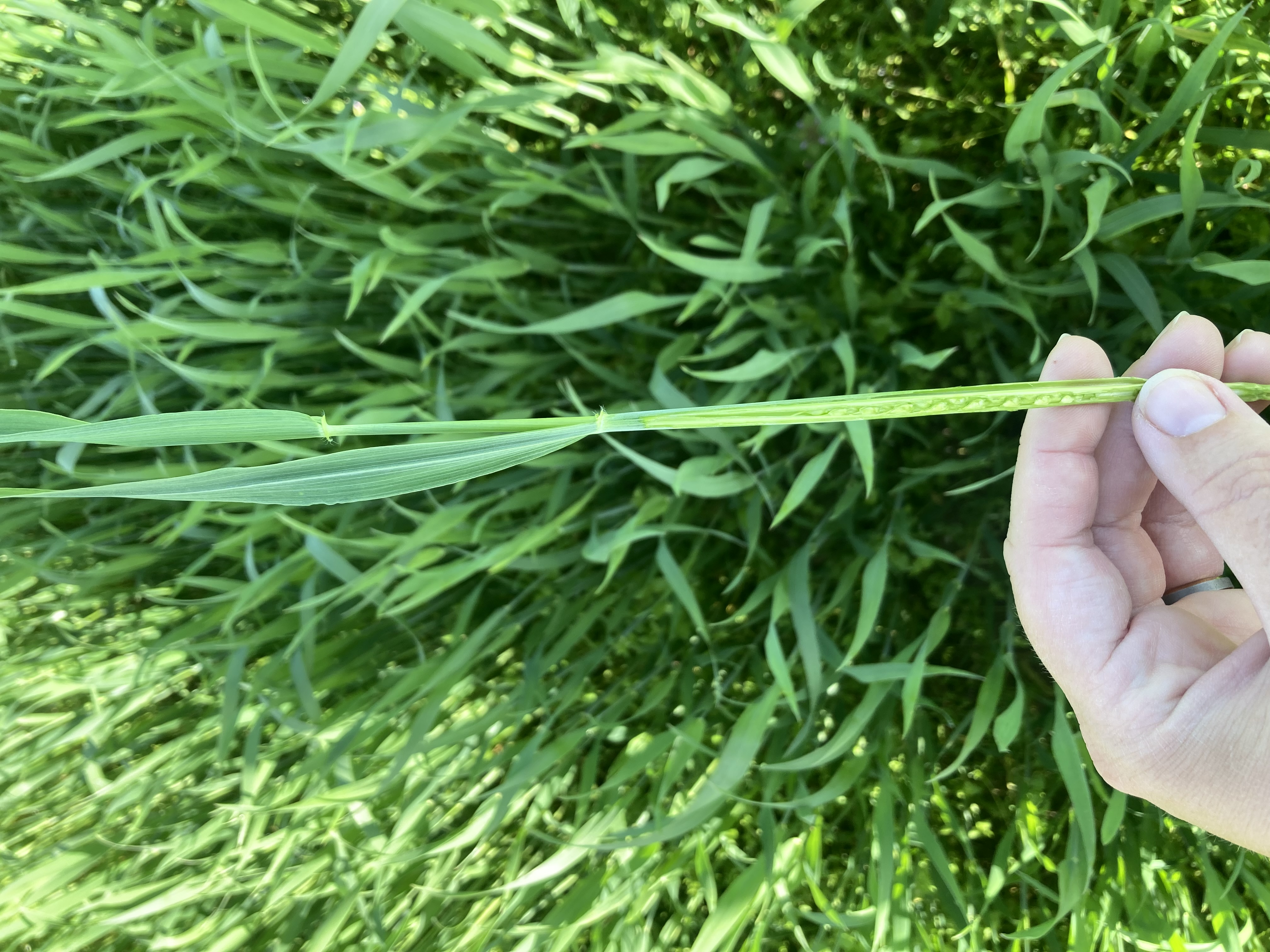
Potatoes began to emerge, and pre-emerge herbicide applications continued to go out. A little less than two weeks after emergence, tuber initiation can begin, resulting in considerable water uptake.
First cuttings of alfalfa will begin next week in some parts of southwest Michigan. Alfalfa weevil continues to be present in fields, and several insecticide applications have gone out at this point. As alfalfa weevil populations build, wait as long as possible to spray, and cut early if possible to preserve natural enemies. Natural enemies provide free season-long insect control. Although the damage looks bad, wait to spray for alfalfa weevil until the crop has met the following conditions: if alfalfa is about 16 inches tall, about 100% of stem tips have feeding damage, and there are four or more larvae per stem, harvest early. If the alfalfa is taller than 20 inches and has the same criteria, again, harvesting is the best control option. For more information, refer to the article “Weevils are popping in alfalfa fields.” If you are in southwest Michigan and feel uncertain about the time and/or procedure for scouting alfalfa weevil, contact Nicolle Ritchie (269-858-8739 or ritchi67@msu.edu), for in-field help rather than spraying too early or unnecessarily.
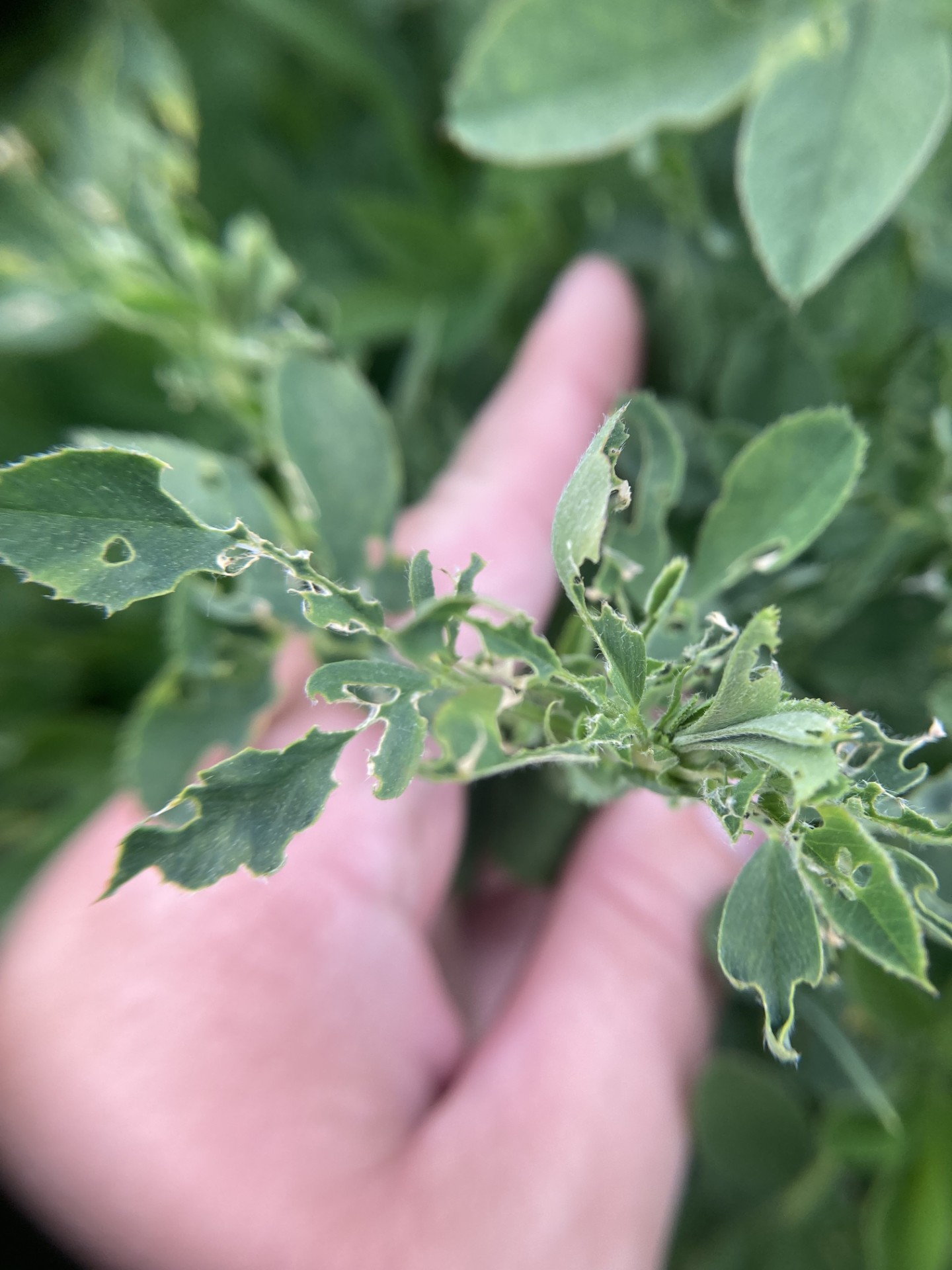
Irrigation update and crop water use
Early in the season, water use for corn and soybeans remains low across all three regions. At the VE stage in corn and the VC cotyledon stage in soybeans, plants are small with limited canopy and root development, resulting in very low water demand, typically less than 0.25 inches per week.
Wheat, on the other hand, is currently at peak water use, requiring over 1.2 inches per week in some areas. Applying the right amount of water at the right time can significantly improve both yield and grain quality. However, if irrigation is needed during flowering, be sure to monitor fields closely for signs of disease. Increased leaf wetness during this stage can raise the risk of foliar diseases such as Fusarium head blight. For more information, refer to “Considerations for irrigating wheat.”
It’s important to continue monitoring local weather and soil conditions to adjust your irrigation strategy as the season progresses. Tools like Irrigation Scheduling Tools can help estimate crop water needs and decide timing and application.
Estimated weekly crop water use for field crops in Michigan (inches/week) for the week of May 12-17, 2025
|
Crop |
Growth stage |
Constantine |
Entrican |
Hart |
|---|---|---|---|---|
|
Corn |
VE |
0.11 |
0.12 |
0.11 |
|
V2 |
0.21 |
0.23 |
0.21 |
|
|
Soybeans |
VC Cotyledon |
0.21 |
0.23 |
0.21 |
|
V1 1st Node |
0.32 |
0.35 |
0.32 |
|
|
Wheat |
Jointing |
1.09 |
1.19 |
1.16 |
|
Boot / Heading / flowering / Grain fill |
1.17 |
1.28 |
1.24 |
|
|
Soft Dough |
1.06 |
1.16 |
1.12 |
The table above presents estimated crop water use for various field crops across three locations in Michigan. This data helps irrigation management decisions by showcasing potential crop evapotranspiration, calculated based on reference evapotranspiration and crop coefficients for each crop growth stage. It is crucial to note that crop water use values vary across regions due to differences in weather conditions, growth stages, agronomic practices and soil properties.
When using these values for irrigation scheduling, be mindful that they assume all applied irrigation water will be utilized by the plants without any loss. Additionally, these values do not account for any precipitation that may occur during the week of calculation.
Reference evapotranspiration data was obtained from Michigan State University Enviroweather, which also offers a model for determining potential crop evapotranspiration. To access this tool, visit Enviroweather, click on "Crops," select your crop and use the potential evapotranspiration tool by choosing your nearest weather station, the latest date of interest and other crop information.
Field Crops Virtual Breakfast Series
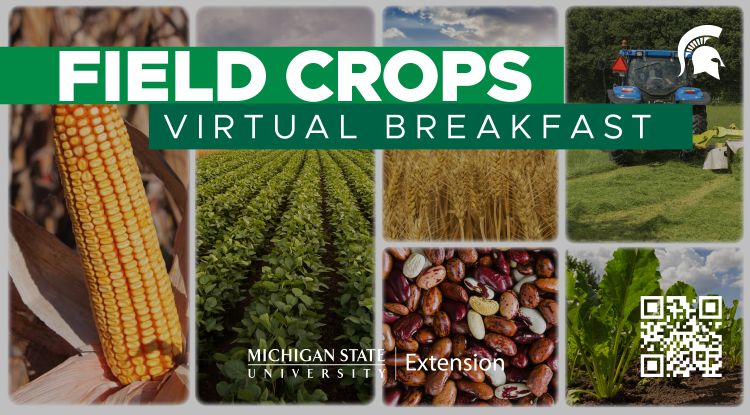.jpg?language_id=1)
Post weed control, presented by Erin Burns, was the topic for the MSU Extension Field Crops Virtual Breakfast this week. Timing is critical for weed management, and a study showed that waiting beyond 2 inches tall to control weeds in corn resulted in reduced efficacy. The 2025 MSU Weed Control Guide provides tables and information on herbicide efficacy, maximum weed heights, rotational restrictions and more.
Recordings of this and all the Virtual Breakfast meetings are closed-captioned and available at the Field Crops Virtual Breakfast webpage and the MSU Extension Field Crops Team social media platforms: Facebook, Spotify, YouTube, Apple Podcasts and Twitter/X.
This work is supported by the Crop Protection and Pest Management Program [grant no 2024-70006-43569] from the USDA National Institute of Food and Agriculture. Any opinions, findings, conclusions, or recommendations expressed in this publication are those of the author(s) and do not necessarily reflect the view of the U.S. Department of Agriculture.



 Print
Print Email
Email




